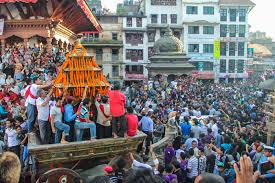Unity in Diversity: Festivals Celebrated in Nepal by Different Communities, Religions, and Cultures"
Nepal's and Nepalese festivals
Nepal, often referred to as the "Land of Festivals," is a country with incredible cultural and religious diversity. With over 120 different ethnic groups and a harmonious blend of Hinduism, Buddhism, Islam, and various other religions, Nepal is a colorful mosaic of traditions and celebrations. In this blog, we'll explore the rich tapestry of festivals celebrated by different communities, religions, and cultures in Nepal, highlighting the unity that emerges from this beautiful diversity.
1. Dashain - The National Festival
Dashain, also known as Vijaya Dashami, is the most significant and widely celebrated festival in Nepal. It is a Hindu festival that lasts for 15 days and honors the goddess Durga. During Dashain, families come together, offer prayers, exchange blessings, and receive tika (a mixture of yogurt, rice, and vermillion) from their elders. This festival showcases the strong familial and communal bonds that are an integral part of Nepali culture.
2. Tihar - The Festival of Lights
Tihar, also known as Deepawali, is another important festival in Nepal. It is a five-day Hindu festival that celebrates various animals such as crows, dogs, cows, and oxen. The final day of Tihar, known as Bhai Tika, is a day for sisters to offer prayers and blessings to their brothers. It beautifully reflects the importance of sibling relationships and love.
3. Indra Jatra - The Newar Festival
Indra Jatra is a traditional Newar festival celebrated in the Kathmandu Valley. It honors Lord Indra, the god of rain, and the Living Goddess Kumari. The festival involves elaborate processions, masked dances, and the erection of a ceremonial pole known as "Yosin." It is a fascinating display of Newari culture and beliefs.
4. Buddha Jayanti - The Birth of the Buddha
Nepal is the birthplace of Siddhartha Gautam, who later became Gautama Buddha. Buddha Jayanti, or Buddha Purnima, is celebrated with immense reverence, particularly in Lumbini, the birthplace of the Buddha. Buddhists from around the world gather to offer prayers and engage in peaceful celebrations.
5. Eid-al-Fitr - The Festival of Muslims
Nepal has a significant Muslim population, and Eid-al-Fitr is one of the most important festivals for them. It marks the end of Ramadan, a month of fasting. During Eid, Muslims gather for communal prayers, exchange gifts, and enjoy special dishes. This festival beautifully showcases religious tolerance and harmony in Nepal.
6. Maghe Sankranti - The Harvest Festival
Maghe Sankranti is a Hindu festival celebrated on the 1st day of Magh (around mid-January). It signifies the harvest season and the gradual increase of daylight. Families come together to enjoy traditional food, especially sesame seeds and molasses, which are believed to provide warmth during the winter.
7. Losar - The Tibetan New Year
The Tibetan community in Nepal celebrates Losar, their New Year. It's a time for prayers, rituals, and family gatherings. The highlight of Losar is the colorful dances, costumes, and cultural performances that enrich the streets of Boudhanath and other Tibetan settlements.
Conclusion
Nepal's diverse tapestry of cultures, religions, and communities contributes to a vibrant and harmonious society. The festivals celebrated in Nepal showcase the deep-rooted values of love, respect, and unity among its people. These celebrations are a testament to the country's inclusive spirit, where different communities coexist, respect each other's beliefs, and join in each other's celebrations. As a visitor to Nepal, you can truly experience the beauty of unity in diversity during these colorful and heartfelt festivals.










Comments
Post a Comment